Key Takeaways
1. Value Creation is the Core of Leadership
As a leader, you’re not there simply to be a personal role model. You’re there to create value.
Value-driven focus. Leadership isn't about popularity or personal attributes; it's about delivering value to stakeholders. This value can be financial, customer-driven, or related to safety, risk reduction, or efficiency. Leaders must understand what constitutes value in their context and align their actions accordingly.
- Financial value: Profitability, ROI, cost reduction
- Customer value: Superior products/services, loyalty, understanding needs
- Risk reduction: Operational, financial, reputational
- Safety: Protecting employees, reducing incidents
Activity vs. Value. Leaders must prioritize high-value activities and eliminate low-value ones. This requires a shift from focusing on inputs (activity) to focusing on outputs (value). It's about choosing what not to do, and ranking initiatives by their potential value.
- Zero-based planning: Challenge all existing activities
- Reward outcomes, not inputs
- Rank work by value, not just prioritize
Excellence over perfection. Striving for perfection can be counterproductive. Leaders should aim for excellence, which involves continuous improvement and a balance between quality and speed. It's about making progress, not achieving an unattainable ideal.
- Iterative approach: Start with a draft, refine over time
- Focus on risk: Understand the potential downside of decisions
- Reward the pursuit of excellence, even when it results in failure
2. Respect Trumps Popularity in Leadership
The secret of [leading] people is to keep the guys who hate you away from the guys who are still undecided.
Respect over popularity. Leaders must prioritize respect over popularity. Not everyone will like you, and that's okay. The goal is to earn respect through competence, integrity, and a focus on results.
- Conflict aversion is a career killer
- Difficult conversations are essential
- Focus on the team, not personal acceptance
Trust is the foundation. Trust is a two-way street. Leaders must trust their people and earn their trust through openness, consistency, fallibility, truth, absence of self-interest, courage, and having their people's backs.
- Openness and transparency: Share thoughts and decisions
- Consistency: Be predictable in actions and reactions
- Fallibility: Acknowledge mistakes and limitations
- Truth: Be honest, even when it's difficult
- Absence of self-interest: Make decisions for the greater good
- Courage: Do what's right, not what's easy
- Having your people's backs: Give credit, protect from failure
Feedback is a gift. Difficult conversations are opportunities for growth. Leaders must provide clear, balanced, tangible, and accountable feedback, with support.
- Clarity: One key message
- Balance: Context of overall performance
- Tangibility: Specific examples
- Mutuality: Two-way conversation
- Criticality: Importance of the feedback
- Accountability: What needs to change
- Support: How you will help
3. Resilience is a Leader's Indispensable Strength
Anyone can hold the helm when the sea is calm.
Balanced leader. Success requires a combination of intelligence (IQ), emotional intelligence (EQ), and resilience (AQ). Leaders must develop all three to navigate challenges effectively.
- IQ: Intellectual horsepower, ability to learn
- EQ: Ability to manage emotions, connect with others
- AQ: Ability to handle setbacks, persevere
Self-awareness is key. Leaders must be honest about their capacity for handling adversity. They must recognize their triggers and how they react under pressure.
- Landmine leader: Quick to anger, explosive
- Teflon leader: Blames others, avoids accountability
- Catatonic leader: Freezes, avoids decisions
Focus on what you can control. Leaders must focus their energy on their circle of influence and control, letting go of things they can't change.
- Cold hard facts: Things you can't change
- Control: What you think, say, do, and how you behave
- Influence: What you can impact through your actions
Perspective is essential. Leaders must put events into perspective, understanding the worst-case scenario and asking the right questions to manage fear.
- What's the worst that can happen?
- How material is the impact?
- What's the long-term impact?
4. Work at Your Level, Not Below It
The problem is, you’re not paid to do your people’s jobs, you’re paid to do your own.
Two key transitions. Leaders must navigate two key transitions: from individual contributor to leader of others, and from leader of others to leader of leaders. Each transition requires a shift in focus and capabilities.
- Leader of others: Close to the work, direct control
- Leader of leaders: Less control, more influence
Professional leader. Leaders must let go of their technical expertise and embrace their role as a leader. This requires a shift in identity and a focus on value creation through others.
- Shift from specialist to generalist
- Focus on enabling others, not doing the work
- Understand the value of leadership
Work at the right level. Leaders must avoid dipping down into the work of their people. This creates dependency, reduces accountability, and prevents growth.
- Focus on strategy, not tactics
- Build capability, not dependency
- Empower your people, don't do their jobs
Leave a level, leave a comfort zone. Each new level requires a new set of skills and a willingness to step outside your comfort zone.
- Understand the purpose of your new role
- Identify new relationships and groups
- Communicate your new focus
5. Master Ambiguity, Don't Be Paralyzed by It
The role of a leader, though, remains the same. As you take on accountability for more senior roles, a critical leadership capability is to sit comfortably in ambiguity, absorb the complexity and uncertainty of your environment, and then translate that uncertainty into tangible, concrete action for those you lead.
Ambiguity is a constant. Leaders must be comfortable operating in a volatile, uncertain, complex, and ambiguous (VUCA) environment. They must translate uncertainty into clarity for their people.
- VUCA: Volatile, uncertain, complex, ambiguous
- Leaders must provide clarity, not confusion
- Connect daily tasks to higher-level objectives
Inaction is destructive. Leaders who can't manage ambiguity often stall, leading to a lack of trust, diluted accountability, and a loss of value.
- Lack of communication creates uncertainty
- Inaction chokes value creation
- Shared accountability becomes no accountability
- Ambiguity snowballs below you
No-regrets moves. When faced with intractable ambiguity, leaders must focus on no-regrets moves that create value regardless of the outcome.
- Build strong foundations
- Invest in core capabilities
- Drive efficiencies
- Gain insights
- Negotiate effectively
- Create contingencies
Ambiguity for competitive advantage. Leaders must use ambiguity to their advantage, identifying opportunities and making bold moves that competitors can't.
- Look for opportunities in times of crisis
- Be decisive, not reactive
- Take calculated risks
6. Decisive Action Beats Perfect Information
Making better decisions faster than your competitors is a key determinant of your organization’s ongoing success.
Timely decisions are critical. Speed is an essential element of great decisions. Leaders must act decisively, even in the absence of perfect information.
- Speed over accuracy
- Avoid analysis paralysis
- Make decisions and adjust as you go
Accountability is key. Decisions must be made by a clearly accountable person, as close as possible to the core expertise.
- Single-point accountability
- Empower those closest to the problem
- Avoid decision-making by committee
Consider multiple viewpoints. Leaders must seek input from diverse perspectives, but they must also filter out the noise and focus on the most relevant factors.
- Seek input, not consensus
- Filter out self-interest and fear
- Rank decision criteria by importance
Holistic impact. Great decisions consider the holistic impacts of problems, balancing short-term and long-term value, and addressing root causes, not just symptoms.
- Consider all stakeholders
- Balance short-term and long-term value
- Address root causes, not just symptoms
Communicate effectively. Leaders must communicate decisions clearly to their stakeholders, explaining the rationale and next steps.
- Be transparent about the process
- Explain the reasoning behind the decision
- Outline the next steps
7. Accountability is the Bedrock of Execution
Shared accountability is no accountability.
Single-point accountability. Every outcome must have a single accountable person. Shared accountability dilutes ownership and reduces the drive for results.
- One head to pat, one arse to kick
- Avoid management by committee
- Clearly define roles and responsibilities
Accountability vs. blame. Accountability is not about blame; it's about ownership and responsibility. Leaders must create a culture where people are empowered to make decisions and learn from their mistakes.
- Focus on learning, not blame
- Create a safe environment for risk-taking
- Reward effort and results
Empowerment is essential. Accountability must be paired with empowerment. Leaders must give their people the autonomy, resources, and support they need to succeed.
- Clear objectives and expectations
- Decision rights
- Appropriate resources
- Coaching and mentoring
- Support for cross-team issues
- Let people succeed or fail on their merits
Accountability in complex organizations. Even in matrix structures, single-point accountability is critical. Leaders must clearly define line and staff roles and ensure that accountability is not diluted.
- Line roles: Focus on core deliverables
- Staff roles: Provide expertise and support
- Line leaders are accountable for outcomes
8. Connect the Dots: Integrate and Apply
When you’re a leader, it is what you do that counts.
Integrate the principles. Leaders must integrate the seven imperatives into their daily work. This requires a commitment to self-mastery and a willingness to change.
- Deliver value: Focus on outcomes, not activities
- Handle conflict: Prioritize respect over popularity
- Build resilience: Manage emotions, focus on control
- Work at the right level: Empower others, don't micromanage
- Master ambiguity: Provide clarity, take decisive action
- Make great decisions: Prioritize speed, seek input
- Drive accountability: Empower, don't blame
Set the tone, pace, and standard. Leaders must set the tone for their team, establishing clear expectations for behavior and performance.
- Tone: Cultural norms, ethical standards
- Pace: Decision-making speed, momentum
- Standard: Performance expectations, quality
Create a meeting cadence. Leaders must establish a regular meeting cadence to communicate, coach, and hold people accountable.
- One-on-one meetings: Build relationships, provide feedback
- Group meetings: Communicate strategy, review performance
- Annual planning: Set priorities, allocate resources
Eat your own dog food. Leaders must model the behaviors they expect from their people. They must be the most accountable person in the organization.
- Lead by example
- Be accountable for your own actions
- Hold others to account
Last updated:
FAQ
What’s No Bullsh!t Leadership by Martin G. Moore about?
- Practical leadership framework: The book provides a no-nonsense, real-world guide to leadership, based on Moore’s experience as a CEO, focusing on what actually drives results through people.
- Seven leadership imperatives: It introduces seven core principles—delivering value, handling conflict, building resilience, working at the right level, mastering ambiguity, making great decisions, and driving accountability.
- Timeless relevance: Moore argues that strong leadership principles remain essential, especially in today’s fast-changing, ambiguous environments.
- Focus on execution: The book emphasizes turning strategy into results through clear accountability, decision-making, and effective communication.
Why should I read No Bullsh!t Leadership by Martin G. Moore?
- Real-world applicability: Written by a seasoned CEO, the advice is practical, actionable, and tested in challenging business environments.
- Debunks leadership myths: Moore challenges common clichés and focuses on what truly drives performance and leadership success.
- Tools for all levels: The book offers frameworks and tools suitable for both new and experienced leaders, helping them elevate their effectiveness and confidence.
- Post-pandemic relevance: It addresses modern leadership challenges, including remote work, rapid change, and technological disruption.
What are the key takeaways from No Bullsh!t Leadership by Martin G. Moore?
- Leadership is value creation: The primary role of a leader is to deliver results by unlocking the potential of their people and focusing on stakeholder value.
- Seven imperatives: These include delivering value, handling conflict, building resilience, working at the right level, mastering ambiguity, making great decisions, and driving accountability.
- Self-awareness and action: Knowing leadership principles isn’t enough; leaders must honestly assess themselves and take deliberate action to improve.
- Execution over theory: Leadership is about execution excellence, not just aspirational virtues or technical skills.
What is the "No Bullsh!t Leadership Framework" and its seven imperatives?
- Deliver Value: Leaders must define and focus on activities that create the greatest value for stakeholders in their context.
- Handle Conflict: Successful leaders confront conflict confidently, prioritizing respect over popularity to build high-performing teams.
- Build Resilience: Mental, emotional, and physical resilience are essential for navigating setbacks and crises.
- Work at the Right Level: Leaders should avoid micromanaging, focus on their unique role, and develop their people.
- Master Ambiguity: Comfort with uncertainty and complexity is crucial, enabling leaders to translate ambiguity into decisive action.
- Make Great Decisions: Timely, well-informed decisions and a culture balancing speed with quality are hallmarks of effective leadership.
- Drive Accountability: Clear accountability, paired with empowerment, ensures ownership and pursuit of excellence.
How does Martin G. Moore define the difference between leadership capability and business acumen in No Bullsh!t Leadership?
- Business skills are not enough: While business education and experience are valuable, they don’t guarantee leadership success.
- Leadership is about influence: The ability to lead people, build trust, and drive performance is distinct from technical competence.
- Beware of arrogance: Overconfidence in intellect, especially after business education, can undermine leadership if not paired with interpersonal skills.
- Sustained success requires both: True leadership combines business acumen with the ability to inspire and influence others.
What does "working at the right level" mean in No Bullsh!t Leadership?
- Avoid micromanagement: Leaders should resist the urge to do their team’s work, which Moore calls "dipping down."
- Focus on leadership tasks: Set high standards, have difficult conversations, and ensure the team delivers value rather than solving every problem personally.
- Build team capability: By working at the right level, leaders empower their teams to deliver results independently and reduce burnout.
- Communicate your new role: When promoted, leaders must reset expectations with stakeholders about their new focus.
How does No Bullsh!t Leadership advise leaders to handle conflict?
- Respect over popularity: Leaders must accept that not everyone will like them and prioritize earning respect by addressing difficult issues.
- Practice conflict skills: Handling conflict is a skill that improves with practice and willingness to engage in tough conversations.
- Build trust as foundation: Openness, consistency, and courage make conflict conversations more effective and less threatening.
- Reframe emotions: Managing negative emotions by shifting to curiosity helps maintain composure and find solutions.
How does Martin G. Moore recommend leaders build resilience in No Bullsh!t Leadership?
- Three-legged stool: Resilience (Adversity Quotient) is as important as intelligence (IQ) and emotional intelligence (EQ) for leadership success.
- Self-awareness: Leaders must assess their reactions under pressure and seek feedback to improve composure and decision-making.
- Focus on control: Using circles of control, influence, and concern helps leaders act effectively during crises.
- Grace under pressure: Techniques like controlled breathing and perspective-taking help leaders remain calm and inspire confidence.
How does No Bullsh!t Leadership address the myth "Our people are our greatest asset"?
- Myth debunked: Moore argues this phrase dehumanizes people and often leads to underutilization rather than true valuing.
- Underutilized potential: Most organizations fail to treat people with the strategic focus they deserve, leaving value on the table.
- Leadership responsibility: Leaders must treat people with the same rigor as financial or physical assets to unlock their full potential.
- Tough decisions required: Avoiding poor performance and tough conversations undermines the value people can create.
What is the "challenge, coach, confront" framework in No Bullsh!t Leadership?
- Challenge: Set clear, ambitious expectations to stretch people to their best while managing stress.
- Coach: Support and guide team members through challenges, helping them develop skills and make decisions.
- Confront: Address underperformance or unwillingness to meet expectations directly and fairly.
- Balance and trust: Most time should be spent challenging and coaching, with confronting reserved for persistent issues, all built on respect.
How does No Bullsh!t Leadership define and promote accountability?
- Single-point accountability: Each outcome should have one person clearly accountable, avoiding confusion and inefficiency.
- Empowerment is essential: Accountability must be paired with autonomy, resources, and decision rights.
- Line vs. staff roles: Accountability resides with line leaders, while staff provide expertise and support.
- Model accountability: Leaders must accept accountability themselves to set the standard and build trust.
What are the best quotes from No Bullsh!t Leadership by Martin G. Moore and what do they mean?
- "Don’t hire a dog and bark yourself.": Highlights the futility and damage of micromanaging; leaders must empower their teams.
- "The standard you walk past is the standard you set.": Leaders set cultural and performance norms by what they tolerate.
- "One head to pat, one arse to kick.": Emphasizes the necessity of single-point accountability for clear ownership.
- "Excellence over perfection.": Encourages timely, good-enough decisions and actions over waiting for perfect outcomes.
- "If you think the same as me, then at least one of us is redundant (and it probably isn’t me).": Promotes diversity of thought and robust challenge as essential for great leadership.
Review Summary
Readers highly praise No Bullsh!t Leadership for its practical, no-nonsense approach to leadership. Many appreciate the author's real-world experience and clear, implementable advice. The book is lauded for its ability to challenge leaders at all levels, offering a framework for effective leadership without fluff. Reviewers consistently mention the book's relatable content, actionable insights, and its value for both new and experienced leaders. Several readers note that it stands out among leadership books for its honesty and straightforward guidance.
Similar Books
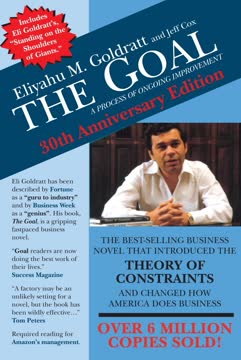
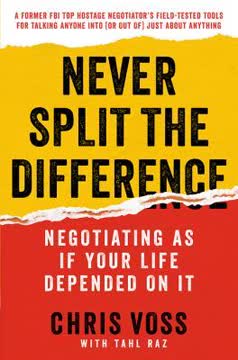

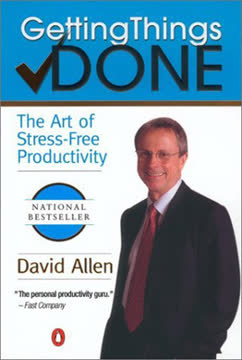
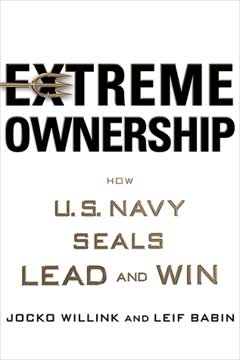

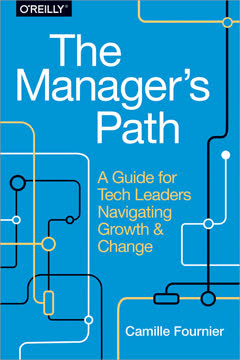



Download PDF
Download EPUB
.epub digital book format is ideal for reading ebooks on phones, tablets, and e-readers.




